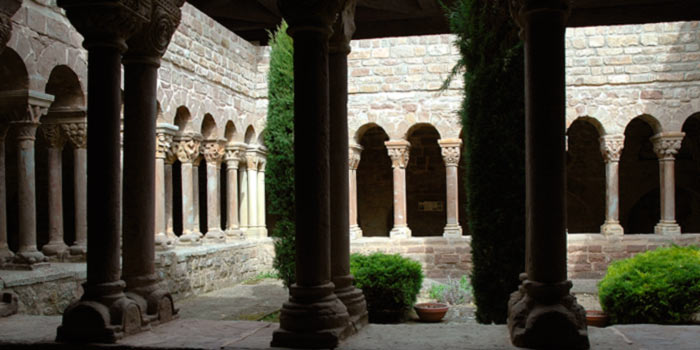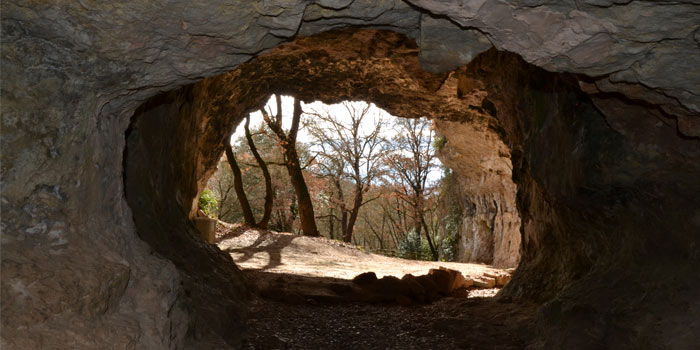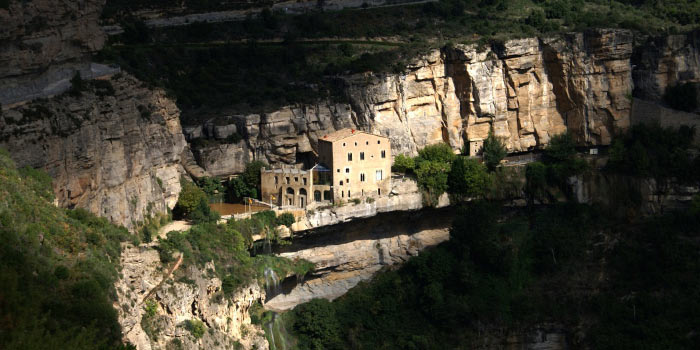The secret region
Moianès is the best-kept secret of the regions of Barcelona. Maybe because it’s small, or perhaps because it’s surrounded by three vast counties —Bages, Osona and Vallès Oriental—, but if you come here, you'll discover a land with fascinating heritage and a character all of its own. How about getting to know this unique jewel?
Stone is perhaps the first thing to admire about Moianès, such as the stone prehistoric Caves of El Toll in Moià, inhabited by its first settlers. Another stone element is the Pla de Trullàs dolmen, a megalithic tomb in Monistrol de Calders. Stone was also used to make the more than 70 capitals that so delicately decorate the cloister of the Monastery of Santa Maria de l'Estany, as well as the limestone kilns in Calders and the vineyard huts in the region, where agricultural tools were stored. You’ll find some lovely ones in Monistrol de Calders.
Water is the focus of the ice wells of Castellterçol, a town that supplied blocks of natural ice for the ships, fishmongers, hospitals and ice-cream makers of Barcelona between the 18th and 20th centuries. Dug 10 metres down into the banks of the river, there are guided tours of the Ginebreda ice caves. Molí Nou Park in Moià is home to an old flour mill and its pond. It’s the place to go to find out how the region’s traditional water-powered mills operated. Meanwhile, in the Cingles de Bertí you can visit Sant Miquel de Fai, a natural site where water has shaped an amazing landscape.
Are you more interested in land, animals and trees? Well don’t leave Moianès without exploring the Esplugues farmhouse in Castellcir, part of the Moianès Eco-Museum, where you can find out what life was like in a typical manor house.
- Would you like to enjoy the Moainès landscape from a different perspective? Take to the skies in an ultralight aircraft!
More information:
Tourist Board of Moianès El Toll caves
Monastery of Santa Maria de l'Estany
Centre for Contemporary Art and Sustainability – The Limestone Kiln
Castellterçol Ice Wells
Moià Tourism
Sant Miquel de Fai
Esplugues Eco-Museum
Vol Xerpa: ultralight aircraft




